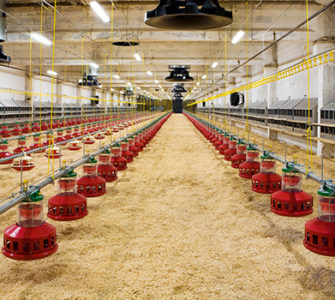Avian pathogenic E. coli: Difficult to prevent and control
The bacterium Escherichia coli (E. coli), has re-emerged in broiler operations, said Nicolle Lima Barbieri, researcher at the University of Georgia. The bacterial pathogen’s appearance in broilers seems to coincide with poultry companies’ switch to ‘no antibiotics ever’ (NAE) programs. Avian pathogenic E. coli (APEC) is not well understood, she told Poultry Health Today.
“Avian pathogenic E. coli gained some genes that we call virulence factors, which make the bacteria able to cause disease,” Barbieri said. “These bacteria in the field can change and virulent genes can transfer from one bacteria to the other.”
This is the same E. coli that can cause illness in humans, she added. “Some studies correlate APEC to the same E. coli that causes neonatal meningitis in babies, or urinary tract infections in humans,” she said.
Barbieri studied APEC in a project that compared two systems: one utilizing antibiotics in a conventional system; the other in NAE birds. The study compared APEC prevalence during production in the birds as well as in the litter, food and water.
Two broiler farms were sampled during grow out. Samples were collected on day 1, 19, 30, 44, 51, 56 and 57, and at every sampling day, the cecum and ileum were collected from 15 birds. A total of 416 E. coli were isolated and screened for the presence of the minimal predictor genes of APEC.
Interesting results
Differences in prevalence and detection of APEC genes between the two farms were observed. “On the conventional farm, APEC-like positive samples were detected at the first sampling and decreased over time to slaughter,” Barbieri said. Conversely, “samples collected on the NAE farm detected APEC-like isolates from the second sampling day (day 19) and increased in prevalence until slaughter.”
She found the prevalence of APEC was higher in the antibiotic-free setting compared to the conventional setting, and although the data wasn’t available yet, Barbieri felt it was safe to say mortality was higher and performance was lower in the E. coli-infected birds.
Antimicrobials may have previously masked the E. coli that was present in birds. “We will need to find new methods to control it,” Barbieri said. “This is something we are studying in our lab.”
Extra DNA
Barbieri explained that the extra DNA in the bacterium is what causes disease, and there is no known method from eliminating just the pathogenic DNA.
“When we kill the E. coli, we kill all of them, and when we select for resistant [genes], we may be are doing more harm than good — that’s still not clear,” she said.
APEC can often become a secondary infection if birds are dealing with other health challenges, Barbieri said. “If the chicken’s immune system is challenged, E. coli is one of the first things to come up,” she said.
More research necessary
Barbieri said more research on APEC is needed. “We need to find a way to control [APEC],” she said. “Some studies suggest E. coli bacterium stay in the biofilms in the barn, because they form bacterial communities in the house, so that is a study we are doing in our lab…”
Previous research indicates the method used to clean the poultry house may actually increase the amount of the bacteria that are pathogenic because some genes in the bacteria may cause it to become resistant to the disinfectant.
“We need to be smarter than the bacteria,” she said, adding that management is important for effective APEC control. Proper air flow is critical, along with making sure the barn is clean before birds are brought in. Even with good management, however, APEC can come into a flock, which emphasizes the need for more research, Barbieri said.
Posted on October 10, 2019

















